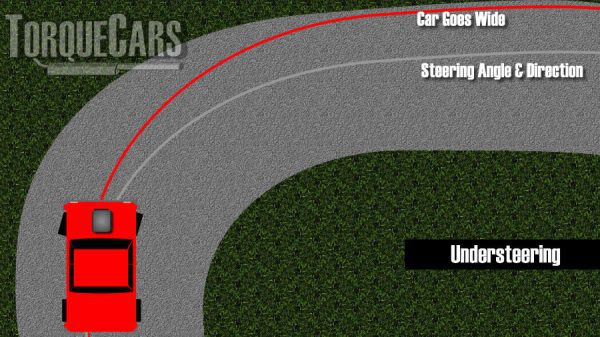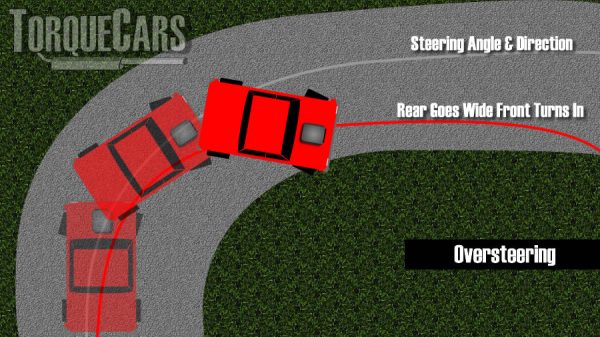Car Stability Control & Traction Control – Do You Need It & What Does It Do?
Here we delve into the basics of the Stability control and traction control systems in modern-day vehicles & discuss their working mechanism in detail.
Please watch our video which covers the Traction Control vs Stability control. Be sure to keep up with our latest YouTube content and subscribe.
What Is Stability Control?
Stability control as the name indicates is a safety feature that is found on most present-day vehicles.
This system improves the stability of your car and helps you from losing control of the vehicle while cornering.
Do You Need Stability Control?
Well, the obvious answer is yes. Why would someone not want to be safe? After all, this system keeps your vehicles from entering a major accident.
Stability Control helps in preventing your car from skidding and rolling over in slippery situations.
A vehicle without the stability control feature has a much higher chance of being involved in an accident as compared to one that has this feature.
In a real-world situation, where each second matters and could mean the difference between life and death, car stability control can be a saviour for you.
By reducing the spin-out, the stability control feature works wonders and keeps you from not just rolling over but also from hitting the oncoming high-speed traffic.
Research suggests that electronic stability control has a 56% higher chance of mitigating the reason behind a car accident.
How Does It Work?
Let’s now take a look at how this miraculous feature works for keeping you safe on the road.
By constantly analyzing the direction of your car’s steering and wheels, the system automatically kicks in if it detects that the vehicle is going out of control.
Depending upon the requirements, the stability control takes charge of one or more wheels to make your car stable.
Anti-Skid System
An anti-skid system is a safety mechanism that detects whenever a vehicle’s wheel starts to skid.
When this system detects such a behaviour, it temporarily stops the braking process for a fraction of a second and then applies the brake again. This process is relatedly performed and it aids in making the vehicle more stable and prevents skidding.
The anti-skid mechanism continues to operate while activating and disengaging the braking of a particular tyre quickly. This means that the vehicle slows down but also doesn’t skid.
It is worth noting that the anti-skid feature works separately for each wheel and some people report that they get a pulsating feeling on the brake pedal while the anti-skid feature is engaged.
Anti-Roll
An anti-roll or a sway bar is a pivotal feature of modern-day cars mainly because of the added safety that they offer to the passengers.
The purpose of anti-roll systems is to minimize the sway or body roll that is experienced when a car is cornering.
When a vehicle corners at a high speed, its mass is shifted to one side of the vehicle. This results in reduced mass on the other side of the car and this causes the unloading of the suspension components.
A limited amount of body roll is required by vehicles while cornering. However, when this crosses the required amount, the vehicle can understeer or oversteer depending upon the value of the body roll.
It is also to be noted that while a vehicle corners, its body doesn’t remain parallel to the road.
If the body roll becomes excessive, the tyres on one side of the vehicle will be lifted into the air. This will not only make the vehicle very unstable but also extremely difficult to control.
Because of the reduced contact patch between the vehicle's tyres and the road, the vehicle is prone to rolling over.
While performance vehicles get special treatment of negative camber to prevent this situation from happening, normal passenger vehicles can’t. This is why anti-roll mechanisms such as anti-roll bars are added to vehicles.
These systems are not installed by average drivers and thus special care needs to be taken while cornering the vehicle. Keeping a check on the vehicle’s speed while cornering is a great way of avoiding any unfavourable situation.
Understeer & Oversteer
Now let’s discuss understeer and oversteer and what causes them.
Understeer

Understeer occurs when the vehicle does not turn in accordance with the driver's instructions and instead moves in a straight line rather than cornering.
Understeer is a common problem in front-wheel drive vehicles. The main reason for this is that the wheels must accelerate and turn at the same time.
However, rear-wheel-driven vehicles also experience the problem of understeer.
It is to be noted that the problem of understeering is also observed in vehicles in which the engine is located ahead of the front axle.
Understeer is usually easier to fix as compared to oversteer because it is more predictable than the latter.
Reasons of Understeer
There are two main reasons for understeer which are:
Due to excessive speed, the car's front wheels lose grip;
The vehicle’s wheels get locked due to the hard braking.
What Is Oversteer?

Oversteer on the other hand is when a vehicle turns way too much as compared to the requirements.
In case of oversteer, the rear wheels of the vehicle lose grip which makes the vehicle rotate around its axis.
Reasons Of Oversteer
Numerous factors can lead to oversteer. Here are a few of them in detail:
Entering a corner with too much throttle is one of the most common reasons for oversteer. This causes the rear tyres to slip and eventually the vehicle starts drifting from the intended path;
Lifting off your foot from the throttle can also be one of the reasons that can aid the oversteer process.
This happens because under such a situation, the weight of the vehicle is instantly shifted to the front side and the rear end becomes relatively lighter which reduces the traction on the rear axis of the vehicle;
Selecting a lower gear than the requirements can also aid the oversteer process because under such a condition the rear wheels of the car lock up. This happens because the selected gear becomes unable to power the already fast-moving wheels of the car.
This again shifts the weight of the car to the front end and thus the car starts moving sideways.
What Is Fishtailing?
When the rear wheels of a vehicle lose traction before the front wheels, the effect is known as fishtailing.
The electronic stability control is designed to detect this problem and overcome it with the help of braking.
When Is Stability Control A Problem?
When the driver intends to drift the car, stability control becomes a problem. That's because when stability control is activated, drivers lose the ability to freely move their vehicle sideways, which is the fundamental principle of drifting.
This is why, for drifting purposes, the stability control of the vehicle is turned off to get full command over the vehicle.
How Does Traction Control Work?
Traction control is an advanced system that is designed to prevent the wheels of a vehicle from spinning when the car is quickly accelerated.
The traction control system comes into play when a vehicle is moving on a slippery surface and the traction or grip between the tyres and the road surface is less than the requirements.
In simple words, the traction control system comes into effect when the speed of the wheels is more than the speed of the vehicle.
This is experienced when the gas pedal is suddenly floored and the amount of power made available to the wheels increases instantly.
Under such conditions, the traction control acts in two different ways to match the speed of the wheels to that of the vehicle. These two ways are:
Reducing the amount of power provided to the wheels during acceleration. This is done with the help of the differential control;
Applying brakes to the spinning wheels.
The traction control system makes use of the wheel speed sensors, electronic control unit as well as the hydraulic control unit of the car.
The traction control system is integrated into the Antilock braking system and in modern vehicles, they are considered a single unit.
The working principle of the traction control system is that the wheel speed sensors detect the speed at which the tyres are moving.
When the system analyzes that a wheel is slipping and is thus moving faster than the other wheels, the ECU of the vehicle signals the hydraulic control unit to apply brakes to that wheel for bringing down its speed.
When Is Traction Control A Problem?
Traction control is an advanced and highly beneficial system. However, there are a few situations like muddy and snowy surfaces in which the TCS can hinder the forward motion of the vehicle.
This is because the friction between the tyres and the road surface is greatly reduced while moving on such surfaces, causing slipping and making it difficult for the vehicle to keep moving forward.
While extra power is required to move forward in such cases, the traction control system restricts power to the wheels or applies brakes, which, rather than pulling the vehicle out of such a difficult situation, makes it more difficult.
Please Check out my YouTube channel, we're regularly adding new content...
PLEASE HELP: I NEED YOUR DONATIONS TO COVER THE COSTS OF RUNNING THIS SITE AND KEEP IT RUNNING. I do not charge you to access this website and it saves most TorqueCars readers $100's each year - but we are NON PROFIT and not even covering our costs. To keep us running PLEASE Donate here
If you liked this page please share it with your friends, drop a link to it in your favourite forum or use the bookmarking options to save it to your social media profile.
Feedback - What do You Think?
Please use our forums if you wish to ask a tuning question, and please note we do not sell parts or services, we are just an online magazine.
Help us improve, leave a suggestion or tip
Please watch this video and subscribe to my YouTube channel.

 Click to accept YouTube Cookies & Play.
Click to accept YouTube Cookies & Play.